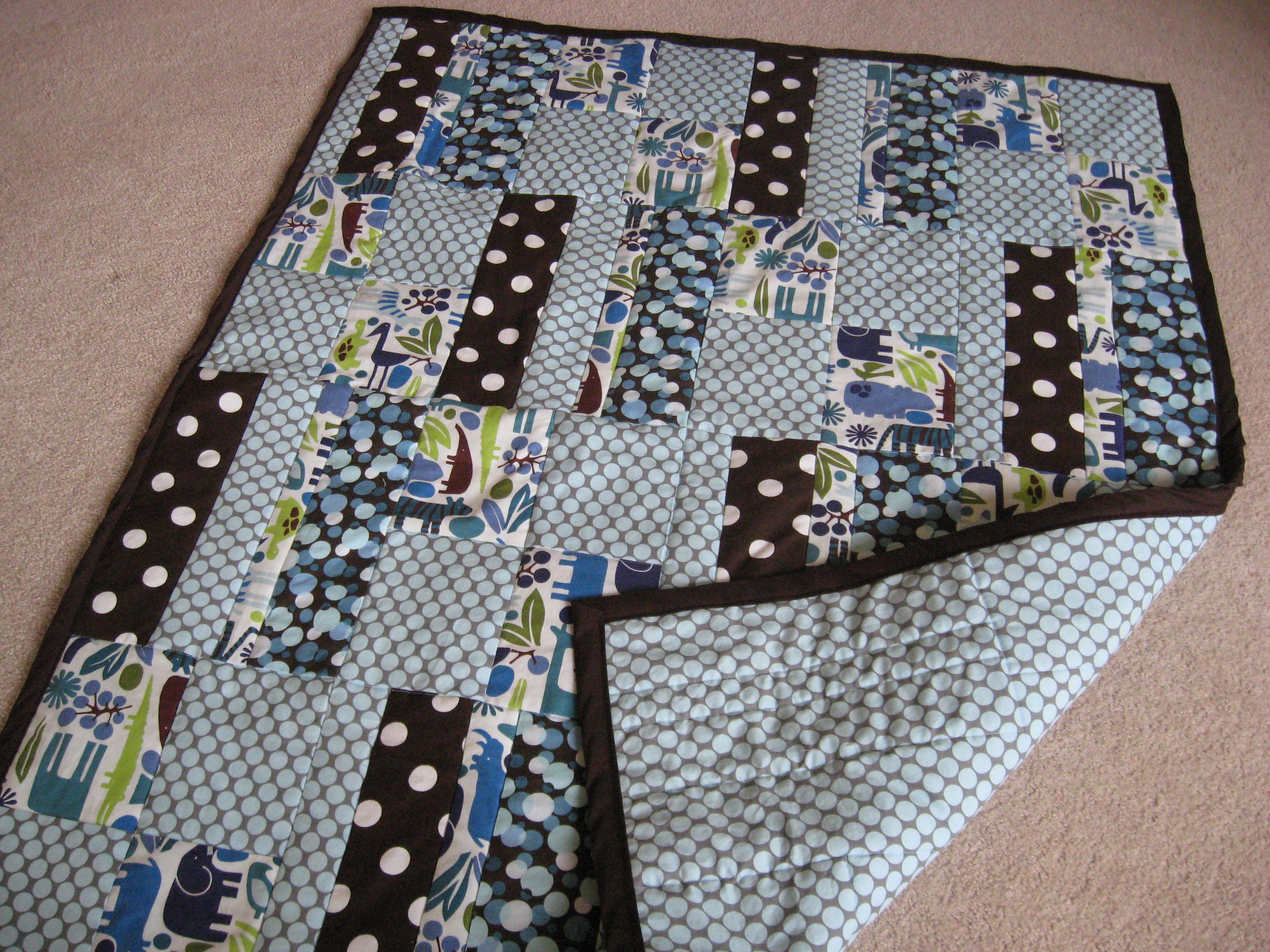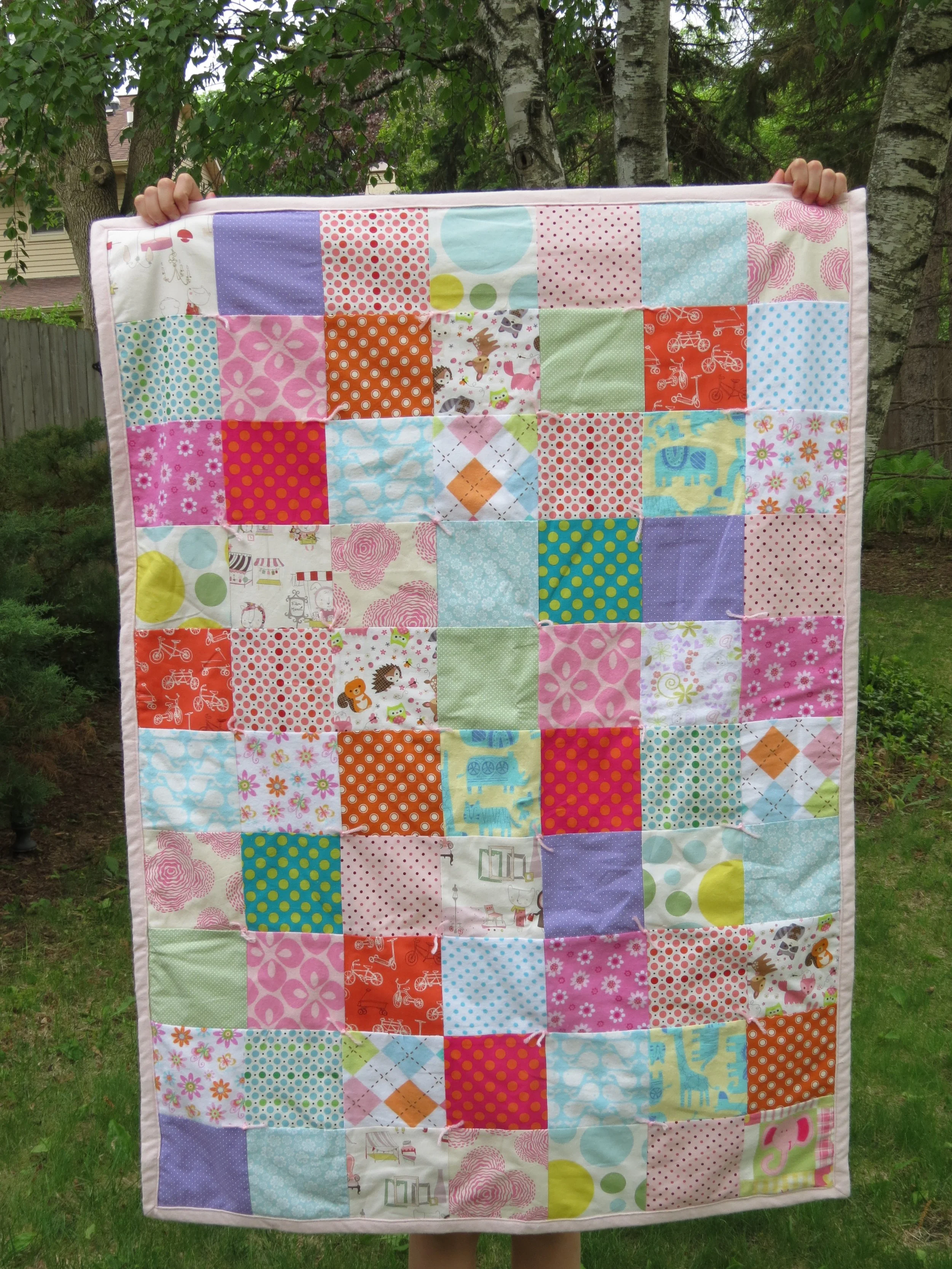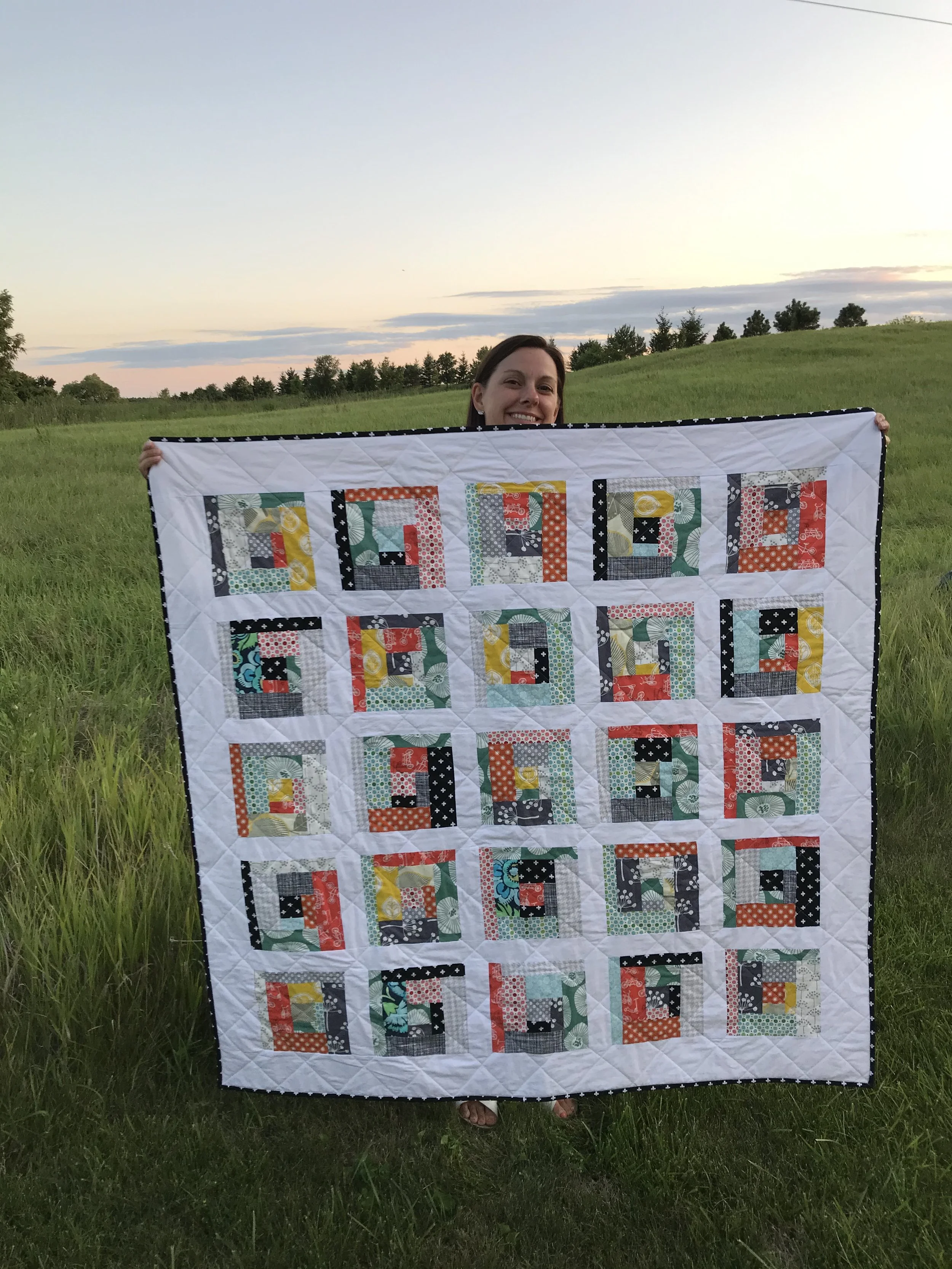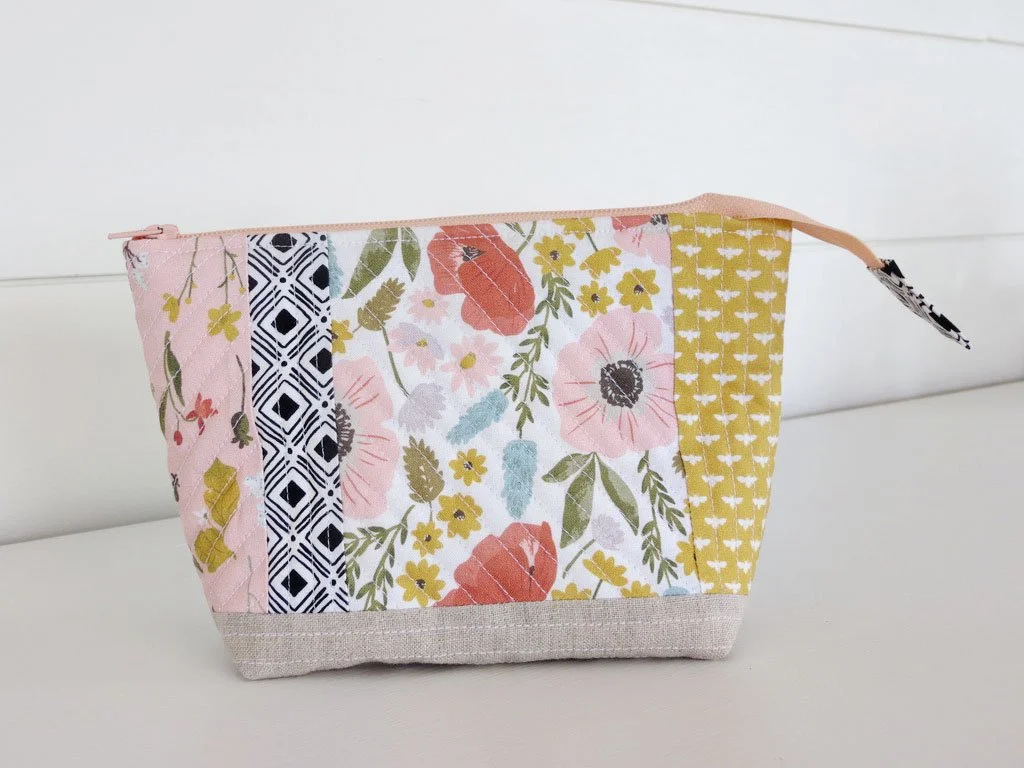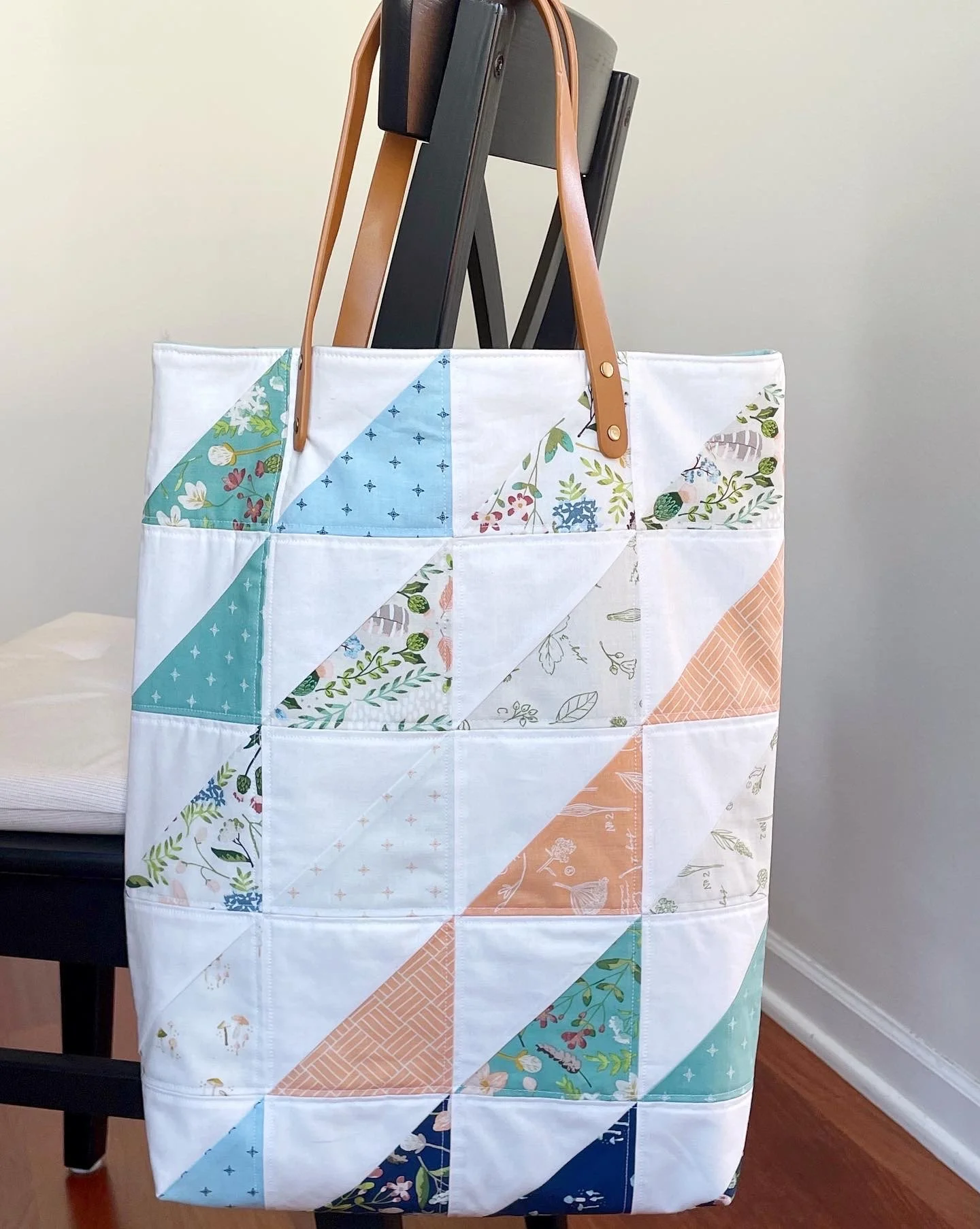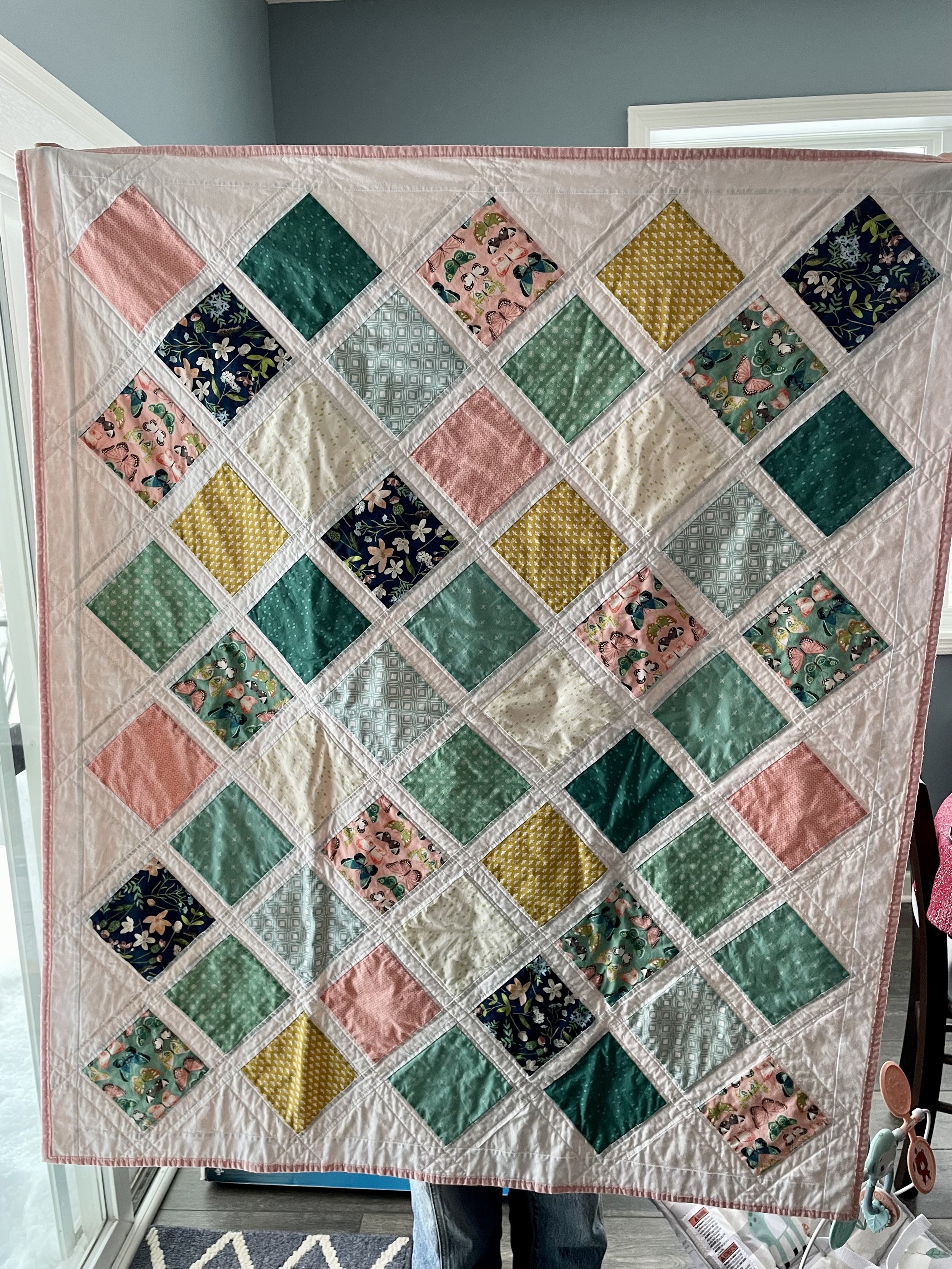First Stitch: A Beginner’s Road to Quilting
* The following post contains some affiliate links to products I have used myself. As an Amazon Associate I earn a small commission, at no extra cost to you, from qualifying purchases.
Do you pause a bit when you scroll past a pretty quilt on Instagram or Pinterest and wish you could make it? After getting a sewing machine for Christmas have you been wanting to maybe try quilting but have been too overwhelmed to try? I’m consistently impressed by quilters but for a long time I resisted quilting. Quilting had, dare I say it, kind of a “grandma” vibe to it? (Why this bothered me is a mystery because I am, in fact, all the way, pro-grandma lifestyle) In fact many of my introductions to quilting were through older women, but much like all other areas of sewing, crafting, and handicrafts, the revitalized community of sewing and modern quilting, held up by those earlier generations, really drew me in. I was drawn to the colors and patchwork and modern designs. And honestly, that long history, heritage, and community aspect of quilting is so fascinating to me. Eventually I took the leap and tried quilting for myself.
“We stitch together quilts of meaning to keep us warm and safe, with whatever patches of beauty and utility we have on hand.”
I consider myself a beginner/intermediate quilter. Sewing has never been a main focus of my business but I’ve been a “hobby” sewist for a long time (20+ years?) and early on the only quilting I attempted were baby quilts. Many nieces and nephews (and, ahem, only one of my own kids, sorry other kids) received quilts when they were born. I suppose that should still count as quilting because I did learn some good skills, but they didn’t feel like “real” quilting to me. But baby (or crib sized) quilts are really a great way to try out quilting because they’re a very manageable size. The most overwhelming aspect for me about quilting is the sheer scope of the projects (and my misplaced expectations for perfection). Quilting has many steps (choosing fabric, cutting, piecing, layout, basting, quilting, binding) and while the actual sewing might not be that complicated it can just take a long time (especially when you’re just getting started). Quilting is a marathon, not a sprint.
Somewhere in 2019/2020 I started and finished, what I would consider to be, my first “real” quilt. It was a throw size quilt, which is solidly where I’m at for quilt size. I don’t particularly like quilts on beds so all the quilts I make are in heavy rotation to snuggle under on the couch. Also, thus far, I’ve quilted all my quilts myself vs. sending them to a long-arm quilter (Q: What? A: Having someone else with a big fancy machine quilt your quilt for you with fancy designs) so size is a crucial factor for me. Since then I’ve made a handful of other quilts along with some smaller quilting projects (pouches and bags, wall hangings and table toppers). And in the meantime I started designing quilting fabric with Riley Blake Designs, so I’m even more invested in learning about quilting. I am still a ridiculously slow quilter (my latest quilt was made over the course of a year and a half! See below.) but I’m trying to lean into the process of quilting. My projects are never (never) perfect but I’ve tried to learn new techniques and whenever I come across a pattern or project I want to try I download it to Dropbox or iCloud or save it on Pinterest or Instagram so I can go back to it later. Right now the list of things I want to make would take me well over a lifetime to complete.
The Penny Quilt in my Midsummer Meadow fabric
My latest, and most ambitious, quilting project to date. Pattern by Kitchen Table Quilting.
Now, as evidenced by the above, I am far from an expert in quilting, but I thought it would be fun to share some of the tools and resources that have been most helpful to me as a beginner quilter. I am not here to teach you how to quilt - there are far more qualified teachers out there for that. But sometimes I think there’s actually an advantage to getting advice from people who are only slightly ahead of you in terms of skill level. And I’m also a strong advocate of starting wherever you are. The lack of a specialized tool or gadget should never hold you back from starting something new, but just like any other endeavor (from home repair and cooking to cutting your own bangs) the right tool can go a long way to helping you have a better experience. And hey, sometimes we don’t have a friend or family member who can pass down their knowledge about a certain craft and that’s why we invented the internet.
Basic Tools
Beyond a sewing machine and an iron, these are some of my favorite and most used tools for quilting:
Cutting Mat: The easiest way to cut fabric. I recently replaced my cutting mat with the Fiskars Self Healing Cutting Mat. I like a larger size (24”x36” fits on my cutting table). I’d also recommend The Tattooed Quilter Cutting Mat by Christopher Thompson and Riley Blake Designs. I really wanted to get this mat but they weren’t available at the time I replaced mine, but they have recently come back on the market.
Rotary Cutter: I have this Olfa 45mm Rotary Cutter. So so sharp. Watch your fingers. But replace your blades often, it makes a world of difference.
Scissors: I also have had some Fiskars fabric scissors for years. This pair of Easy Action Sewing and Crafting Scissors is the updated version of what I have - they’re very easy on your hands and lay flat for cutting fabric.
Quilting Rulers: I used a little flimsy ruler for so many years before I upgraded and . . . wow. Save yourself some time and swear words and just get a sturdy one earlier than I did. I have a couple OmniGrid rulers: the OmniGrid 6”x24” is the one I use the most because it covers the width of my cutting mat. So I’d start there. But I also recently got an OmniGrid 12 1/2 ”x12 1/2” ruler for squaring up corners and it’s pretty handy. Down the road you might enjoy smaller square rulers for cutting out blocks but I don’t think they’re really necessary early on. Creative Grids also makes good quality (slightly more expensive) rulers, I have a 6 1/2”x6 1/2” that I sometimes use.
Safety Pins: I use jumbo safety pins to baste my quilts most of the time. I’d recommend buying a name brand if you order online because I’ve had off-brands pins that are practically unusable they’re so dull. I recently re-stocked my stash with these Dritz Size 3, 2” Safety Pins.
Basting Spray: I recently started experimenting with spray basting quilt sandwiches (especially small quilt projects) and so far I think I like it? I’m using the SpraynBond Basting Adhesive.
Sewing Clips: I bought these awhile back and they’re really nice for clipping on your binding so you don’t have to use pins, which can shift a lot, not to mention stab you in multiple places while you sew. The Clover Wonder Clips are the gold standard. I’ll admit I bought the off-brand ones (the exact ones I bought aren’t available anymore so I can’t link to them) and they’ve worked fine for me too.
Quilting Gloves: If you’re going to do any machine quilting on your own I’d recommend you get yourself some gloves. When I first saw these on a tutorial video I was like, “What the hell?” but I gotta say, they make it so much easier to move your quilt through your machine. I got them the first time I tried free-motion quilting and they’re so worth it! Machingers Quilting Gloves.
Miscellaneous: Finally, I’ll put in a plug for some Riley Blake Designs notions. They often send me these notions in a lovely holiday gift box and I’m so appreciative because I use them all the time! This Holiday Gift Guide from 2022 mentions most of them. I’m a big fan of the Quilter’s/Tailor’s Clapper, the new Churn Dash Binding Holder, and (obviously) Cindy’s Seam Ripper.
Sometime I’d like to do a post about all of my favorite online resources and tutorials, but that will have to wait for now. But while the internet is a great source for information and inspiration, sometimes I like a good old-fashioned book to page through and refer back to over and over again. I’ve used The Practical Guide to Patchwork: New Basics for the Modern Quiltmaker by Elizabeth Hartman to help me learn how to quilt, and it also has some patterns included. My first “real” quilt was from her Patchwork City: 75 Innovative Blocks for the Modern Quilter book too (which was a gift from a quilter friend).
Consider this your invitation to try quilting if you’ve been considering it. Start small, start easy, I think you’ll find that it’s not as intimidating as you think. And perfection is highly overrated.
Do you have a favorite quilting tool? Put it in the comments below - I’d love to know!

